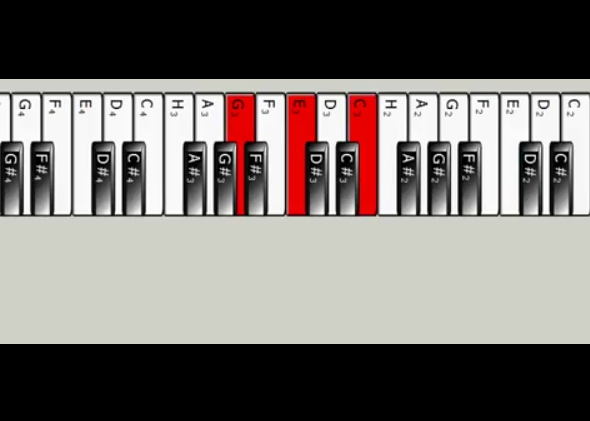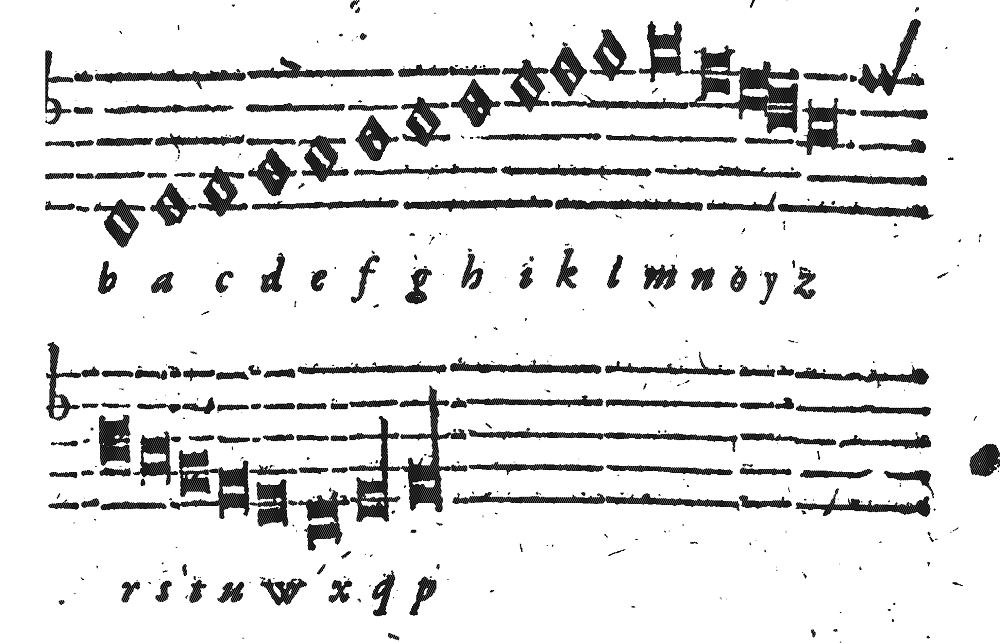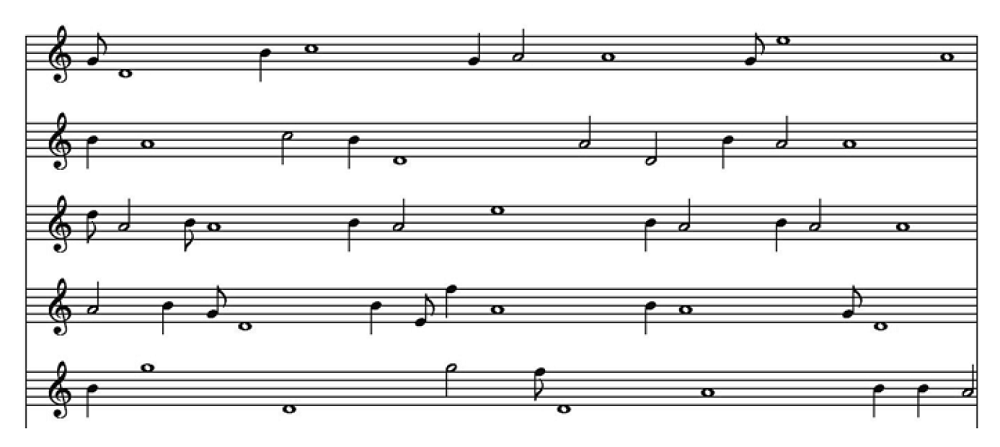Blog reader Martin Lohner has created a piece of music that hides a message. Can you find it?
Hiding a secret message in a piece of music has fascinated both musicians and cryptologists for centuries. In my new book Versteckte Botschaften, which covers the history of steganography, a whole chapter is dedicated to this topic. Here are two examples I covered on my blog (in German):
- The electropop song “Melly Remembers” performed by Melancholodic contains a binary message.
- The song “Better Days” by Natalia Gutierrez Y Angelo contains a morse message meant for hostages kidnapped by Columbian terrorists.
Codes in musical notes
Before modern recording technology came up, hiding a message in music usually meant hiding it in musical notes. The following scheme (by Schwendter) is one of many that were developed:
When developing such a code, the most important difficulty is that a piece of music that encodes a message should sound like real music. The following piece I created for the first edition of my book does not fulfill this requirement – it codes a message (can you find it?), but it sounds pretty awkward.
A much better example, which sounds surprisingly good, was published by Duke August of Brunswick-Lüneburg. Duke August derived this musical cipher from the Steganographia Nova by Count Friedrich von Oettingen-Wallerstein (thanks to blog readers Thomas and Thomas Ernst for the hint).
Martin Lohner’s composition
Blog reader Martin Lohner, who read about August’s musical code on my blog, recently provided me another example of a well-sounding steganographic composition. It is played on the following video:
This piece, which certainly sounds like real music, encodes a German sentence. Every tone of the melody voice (i.e., of the highest voice) stands for a letter, space or punctuation mark. Each of these tones can be expressed as a number:
The composition was created by a computer program of Martin’s design. This program has a number of non-deterministic elements, which means that the same message will result in different musical pieces when the program is run several times.
Can you decipher this musical cryptogram? Martin Lohner has agreed to post hints, in case the challenge turns out to be too tricky.
Follow @KlausSchmeh
Further reading: Listen to this musical cipher from 1933
Linkedin: https://www.linkedin.com/groups/13501820
Facebook: https://www.facebook.com/groups/763282653806483/






Kommentare (14)